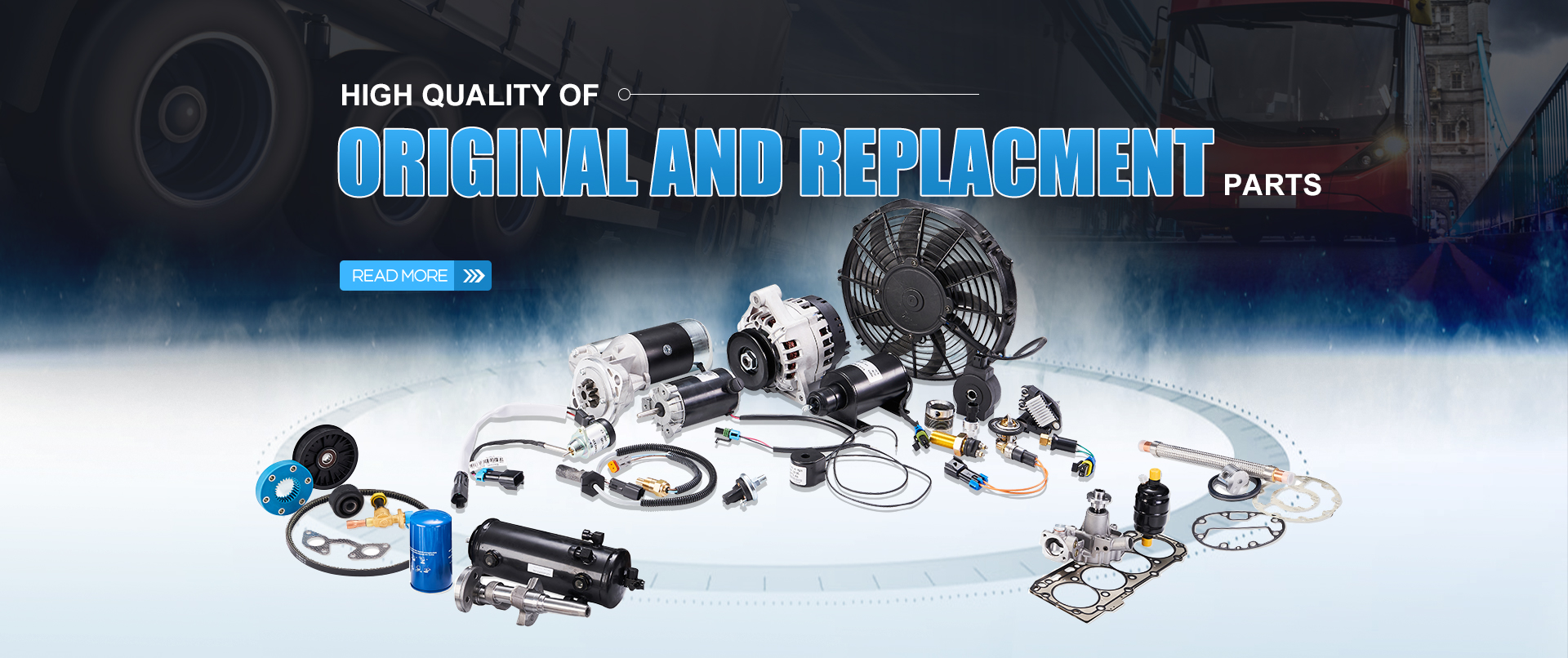
Truck refrigeration units play a crucial role in preserving the integrity of your cargo. They ensure that perishable goods remain fresh during transit. Regular maintenance becomes essential to prevent costly breakdowns. You must understand that the failure rate of refrigerated trucks often follows a ‘bathtub’ shape curve, indicating that issues can arise at both the beginning and end of a truck’s lifecycle. By addressing potential problems early, you can maintain the reliability of your truck refrigeration system and avoid unexpected failures. This proactive approach not only saves money but also ensures the smooth operation of your business.
Tools and Safety Precautions
Essential Tools for Repair
To effectively repair truck refrigeration units, you need the right tools. These tools help you diagnose and fix issues efficiently.
Basic Hand Tools
Start with basic hand tools. You will need wrenches, screwdrivers, and pliers. These tools allow you to access and adjust various components of the refrigeration unit. A socket set is also essential for loosening and tightening bolts. Keep these tools organized in a toolbox for easy access.
Diagnostic Equipment
Diagnostic equipment plays a crucial role in identifying problems. Refrigerant gauges and scales measure refrigerant levels. This measurement is vital because refrigerants cool the air and remove heat. Multimeters help you test electrical circuits and ensure they function correctly. Investing in quality diagnostic tools saves time and improves accuracy.
Safety Precautions
Safety should always be your top priority when repairing refrigeration units. Following safety precautions protects you from potential hazards.
Personal Protective Equipment (PPE)
Wear appropriate Personal Protective Equipment (PPE). Gloves protect your hands from sharp edges and chemicals. Safety goggles shield your eyes from debris and refrigerant splashes. A hard hat can prevent head injuries in case of falling objects. Ensure your PPE fits well and is in good condition.
Safe Handling of Refrigerants
Handling refrigerants requires caution. These substances can be harmful if not managed properly. Always work in a well-ventilated area to avoid inhaling fumes. Use recovery machines to safely remove refrigerants from the system. Follow environmental regulations when disposing of refrigerants. Proper handling ensures your safety and protects the environment.
Diagnosing Common Problems
Identifying Refrigeration Issues
Understanding common refrigeration issues helps you maintain the efficiency of your truck’s cooling system. Two prevalent problems include temperature fluctuations and unusual noises.
Temperature Fluctuations
Temperature fluctuations can compromise the integrity of your cargo. You should regularly monitor the temperature settings of your refrigeration unit. If you notice inconsistent temperatures, check the thermostat settings first. Ensure they align with the desired cooling levels. Inspect the door seals for any gaps or wear. Damaged seals allow warm air to enter, causing temperature instability. Clean the condenser coils as dirt accumulation can hinder heat exchange, leading to temperature variations.
Unusual Noises
Unusual noises often indicate underlying mechanical issues. Listen for any rattling, buzzing, or grinding sounds. These noises could stem from loose components or worn-out parts. Tighten any loose screws or bolts. Examine the fan blades for obstructions or damage. Replace any faulty parts promptly to prevent further damage. Regular maintenance checks help you identify and resolve these issues early.
Troubleshooting Electrical Problems
Electrical problems can disrupt the operation of your refrigeration unit. Addressing these issues requires a systematic approach.
Checking Wiring and Connections
Start by inspecting the wiring and connections. Look for any signs of wear, fraying, or corrosion. Ensure all connections are secure. Loose or damaged wires can cause intermittent power supply, affecting the unit’s performance. Use a multimeter to test the continuity of the circuits. This tool helps you identify any breaks or faults in the wiring.
Testing the Control System
The control system regulates the functions of your refrigeration unit. Test the control panel for any error codes or malfunctions. Reset the system if necessary. Verify that all settings are correct and responsive. If the control system fails to operate correctly, consult the manufacturer’s manual for troubleshooting steps. Seeking expert advice can also provide valuable insights into resolving complex electrical issues.
Expert Testimony: Mr. Demmi S. Santos, a seasoned Refrigeration and Air Conditioning Technician, emphasizes the importance of a structured troubleshooting procedure. He advises starting with power checks and then systematically testing the unit. This approach ensures accurate diagnosis and effective repairs.
Step-by-Step Repair Process
In this section, you will learn how to repair truck refrigeration units effectively. This process involves addressing both refrigeration components and electrical systems. By following these steps, you can ensure your truck refrigeration unit operates smoothly and efficiently.
Repairing Refrigeration Components
Replacing the Compressor
The compressor is a vital component of your truck refrigeration unit. It circulates refrigerant throughout the system. When the compressor fails, the cooling process halts. To replace it, first, disconnect the power supply to ensure safety. Then, remove the refrigerant using a recovery machine. This step prevents environmental harm and complies with regulations. Next, detach the old compressor by loosening the mounting bolts and disconnecting the refrigerant lines. Install the new compressor by reversing these steps. Ensure all connections are secure to prevent leaks. Finally, recharge the system with the correct amount of refrigerant. This process restores the cooling function of your truck refrigeration unit.
Fixing Leaks in the System
Leaks in the refrigeration system can lead to inefficiency and increased operational costs. To fix leaks, start by identifying the source. Use a leak detection tool to pinpoint the exact location. Once identified, repair the leak using appropriate sealants or by replacing damaged components. For instance, if the leak is in a hose, replace it with a new one. After repairing, test the system for any remaining leaks. This step ensures the integrity of your truck refrigeration unit and maintains optimal performance.
Electrical System Repairs
Replacing Faulty Wiring
Faulty wiring can disrupt the operation of your truck refrigeration unit. Begin by inspecting the wiring for signs of damage, such as fraying or corrosion. Replace any damaged wires with new ones. Ensure all connections are tight and secure. Use a multimeter to test the continuity of the circuits. This tool helps verify that the electrical system functions correctly. Proper wiring ensures reliable power supply to all components of the truck refrigeration unit.
Repairing or Replacing Sensors
Sensors play a crucial role in monitoring and controlling the temperature within the truck refrigeration unit. Malfunctioning sensors can lead to inaccurate temperature readings and compromised cargo integrity. To repair or replace sensors, first, identify the faulty sensor using diagnostic equipment. Remove the defective sensor and install a new one. Ensure it is calibrated correctly to provide accurate readings. This step enhances the efficiency and reliability of your truck refrigeration unit.
By following these repair steps, you can address common issues in truck refrigeration units. Regular maintenance and timely repairs ensure the longevity and efficiency of your refrigeration system. This proactive approach not only saves costs but also guarantees the safe transport of perishable goods.
Maintenance Tips to Prevent Future Issues
Regular maintenance of your truck refrigeration unit is crucial for preventing future issues. By following these tips, you can ensure the longevity and efficiency of your system.
Regular Inspection and Cleaning
Regular inspections and cleaning are vital for maintaining the performance of your refrigeration unit. These practices help you identify potential problems early.
Cleaning Condenser Coils
Condenser coils play a significant role in the cooling process. Over time, dirt and debris can accumulate on the coils, reducing their efficiency. You should clean the condenser coils regularly to ensure optimal heat exchange. Use a soft brush or a vacuum cleaner to remove dust and debris. This simple task can significantly improve the cooling efficiency of your unit.
Inspecting Seals and Gaskets
Seals and gaskets prevent warm air from entering the refrigerated compartment. Inspect these components regularly for any signs of wear or damage. Replace any faulty seals or gaskets promptly. This practice helps maintain consistent temperatures and protects your cargo from spoilage.
Scheduled Maintenance Checks
Scheduled maintenance checks are essential for keeping your truck refrigeration unit in top condition. These checks allow you to address minor issues before they escalate into major problems.
Checking Refrigerant Levels
Refrigerant levels directly impact the cooling efficiency of your unit. Low refrigerant levels can lead to inadequate cooling and increased energy consumption. Regularly check the refrigerant levels using gauges. If the levels are low, recharge the system with the appropriate refrigerant. This proactive measure prevents breakdowns and costly repairs.
Routine Electrical System Checks
The electrical system powers all components of your refrigeration unit. Routine checks ensure that the system functions correctly. Inspect the wiring and connections for any signs of wear or damage. Use a multimeter to test the continuity of the circuits. Address any electrical issues promptly to avoid disruptions in the cooling process.
Expert Insight: Demmi S. Santos, a seasoned Refrigeration and Air Conditioning Technician, emphasizes the importance of regular inspections. He notes that skilled professionals can detect minor issues before they become serious problems, saving time and money in the long run.
By implementing these maintenance tips, you can extend the lifespan of your truck refrigeration unit. Regular inspections and scheduled maintenance checks ensure reliable performance and protect your investment. This proactive approach not only saves costs but also guarantees the safe transport of perishable goods.
You have learned the essential steps to diagnose and repair truck refrigeration units. Regular maintenance plays a crucial role in extending the lifespan and reliability of these units. By adhering to a proactive maintenance schedule, you prevent common problems and ensure optimal cooling performance. This approach not only reduces costly breakdowns but also maintains the integrity of your cargo during transportation. Remember, consistent care and attention to your truck refrigeration unit guarantee its efficiency and longevity, safeguarding your investment and ensuring smooth business operations.
See Also
Explore The Latest Carrier Transicold Idler Pulley
Introducing The Thermo King SLXe And SLXi Tensioner
Discover The Carrier Solenoid Valve 14-00348-04
Unveiling The Carrier Starter Motor 25-39476-00
Essential Tips For Oil Filter Maintenance And Care
Post time: Mar-29-2025


